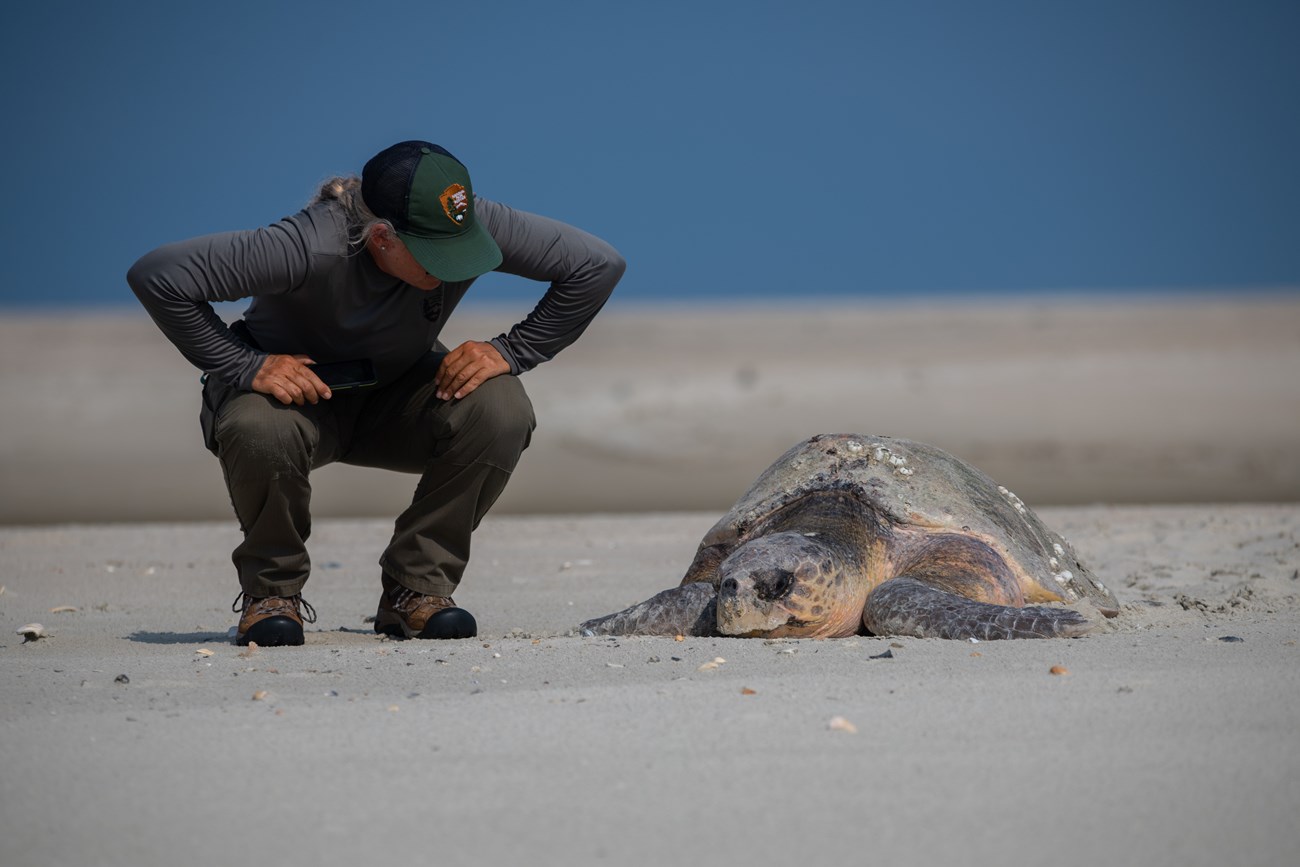
NPS/Morgan Barnes The Turtles of Cape Lookout Cape Lookout National Seashore serves as a nesting area for four threatened and endangered species of sea turtles. 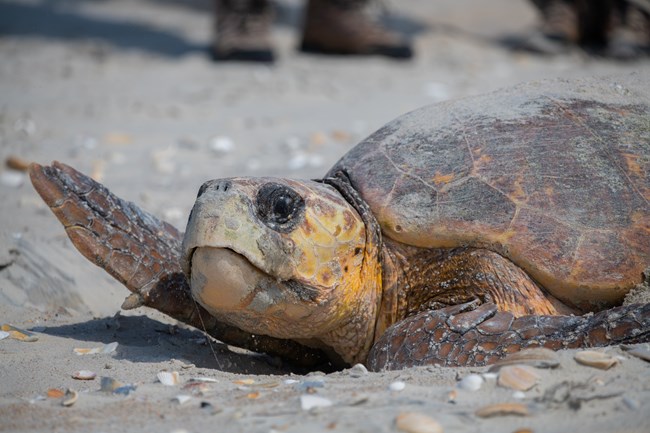
NPS/Morgan Barnes 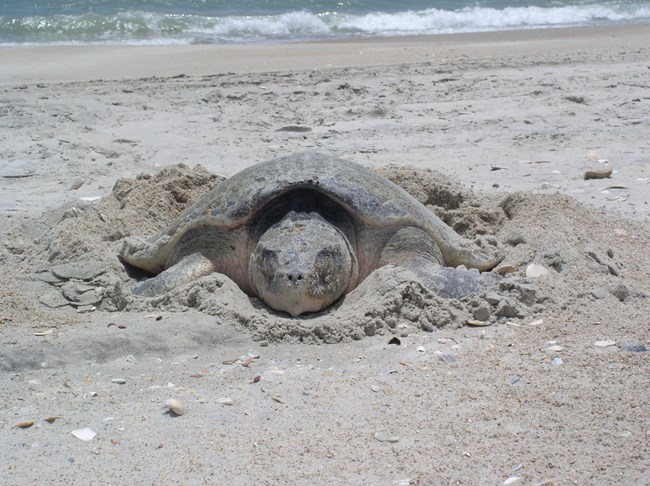
NPS Photo 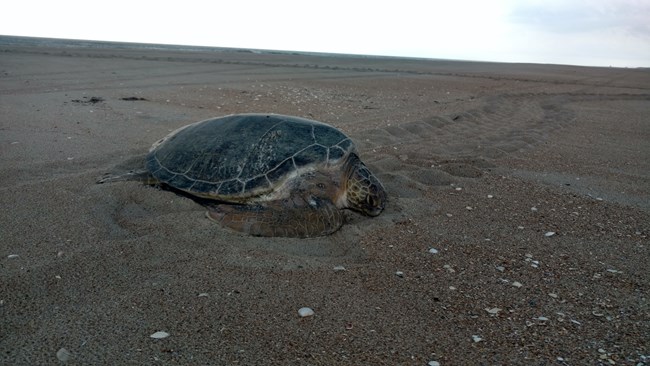
NPS Photo 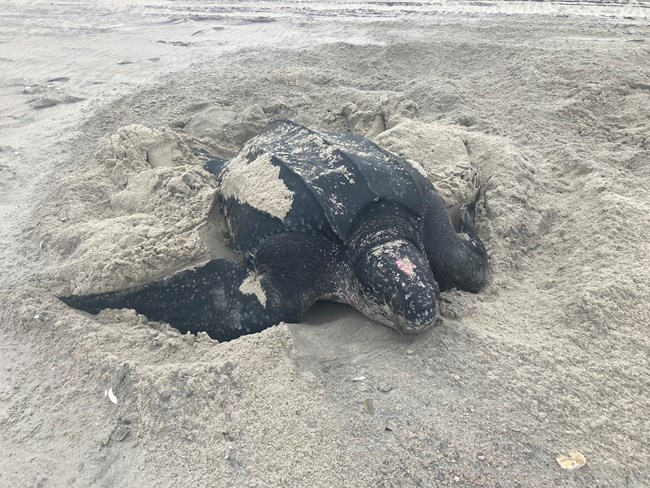
NPS Photo
Nests and Hatchlings In May and June, visitors may see the loggerheads mating in the bight area of Cape Lookout. Shortly after the mating season, the female turtle will come ashore under the cover of darkness to lay her eggs. The female will crawl ashore and choose a nest site near the base of the dunes. Using her strong back flippers, she digs a hole about 18 inches to 24 inches deep. She then lays anywhere from 80 to 150 eggs in her nest before using her back flippers again to cover her nest with sand. She then starts her trek back to the ocean. A female sea turtle can lay up to eight nests in one year but will typically nest only every three years. Sea turtles nests can be destroyed by storm overwash, by predators such as raccoons, cayotes, and ghost crabs, who dig into the nests to eat the eggs, and by off-road vehicles that pack the sand around the egg chamber. When the eggs hatch after about 60 days, the young two-inch long turtles have to dig their way out of the sandy nest and then begin their journey to the ocean. The journey to the ocean is filled with many perils such as sea gulls, ghost crabs, and other predators that like to prey on the turtles. Life in the Sea Even after reaching the haven of the sea, the hatchling sea turtles survival remains in jeopardy. They must grow quickly and avoid predators on their way to the relative safety of the Sargasso Sea, a large area in the ocean filled with floating sargassum weed. The turtle is supremely adapted to life in the water. After the hatchlings make their way to the ocean, they will spend most of their lives in the sea far from land. The sea turtle will return to the beach only to lay her eggs. Many female sea turtles return to the same beach where they were born, their natal beach, to lay their nests. Sea turtles can detect the magnetic fields of the Earth and adult females may use variations in the magnetic field to find their way to their natal beaches. They may also use visual cues and may be able to recognize the chemical compositions of the sand on various beaches. This question may be answered with more research and study about the turtles. 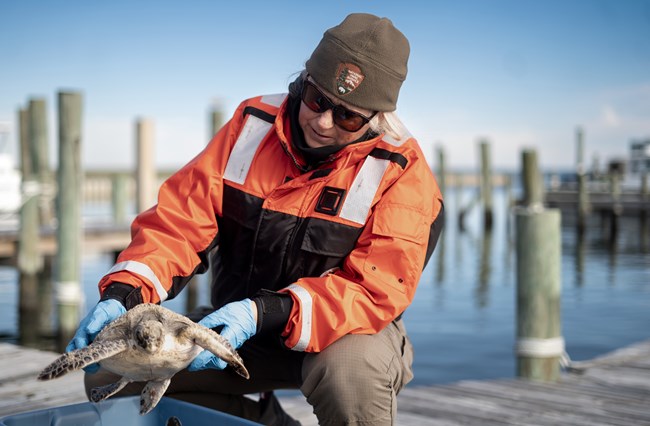
NPS/Sabrina Godin While sea turtles are nesting, Cape Lookout staff will monitor the beach every day. During the incubating period, sea turtle nests are marked with PVC pipes. This keeps them from being run over by vehicles and assist staff with monitoring the nest. Staff members will also protect the sea turtle nests with plastic screens to prevent predators from digging up the nests and eating the eggs. If you are visiting Cape Lookout, do not enter these protected areas to help the eggs remain undisturbed. Cape Lookout staff will relocate a sea turtle nest if it is in a threatened area. If a sea turtle lays her nest where waves and tides can affect it, chances are that the nest may be destroyed. Cape Lookout staff patrol the beach daily looking for the signs of turtle crawls and digs. If the nest appears endangered or threatened, the patrol staff will move it to an enclosed area. 50 days after the nest is laid, a beach closure is created to protect the hatchlings during their hatch window. Cape Lookout staff will close off areas to vehicles because vehicle tracks can be hazardous to turtles. These tracks pose a particular obstacle to the emerging hatchlings. To a hatchling trapped in a vehicle track, the walls of sand may be an insurmountable barrier and predators can catch hatchlings trapped in tire tracks. If a turtle gets caught in the track, they may not be able to crawl out and will die. Prohibiting vehicles inside the enclosures reduces the number of tracks in which the turtles can get caught. Cape Lookout staff will only close areas of the beach if they believe the eggs are ready to hatch. Once the eggs have hatched, Cape Lookout staff will remove the closure. If the nest still has not hatched after 75 days, the closure is also removed. |
Last updated: January 30, 2023
